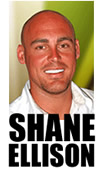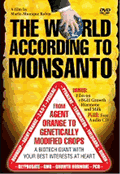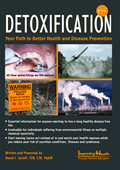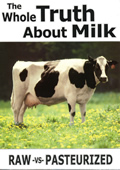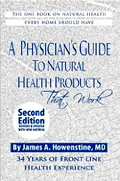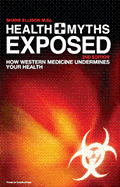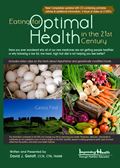SNEAK PEAK INTO OVER-THE-COUNTER NATURAL CURES
By
Shane Ellison M. Sc.
The People's Chemist
September 20, 2009
NewsWithViews.com
The $8 Cure to Deadly Blood Clots and Poor Cardiovascular Function
Grandma Joyce loved her independence. At seventy-two years old, she was proud to be able to take care of herself. Running errands, baby-sitting her grandkids, and even going to the gym three times per week were a joy. Her peers envied her vibrant energy and health. But, that didn’t last.
Six weeks before Christmas, Joyce visited her family doctor for a routine visit. Before even asking how she was doing, he flipped through her charts and suggested that she start taking the anticlotting medicine Plavix (clopidogrel bisulfate) daily. Joyce resisted and questioned his motives. He insisted that it would help to prevent heart attack and stroke, and then reassured her by stating that even his own mom was taking Plavix—so much for scientific-based assertions.
Within about four weeks, Joyce suddenly began bruising, passing blood, and coughing it up. At the emergency room, doctors told her family that she was “bleeding out” and that all attempts to stop it had failed. The bleeding was discovered at the emergency room at 10:15 a.m. Joyce passed away at 9:30 p.m. that same day.
Her three-year-old granddaughter later wondered hysterically, “Why isn’t Nana here for Christmas?” Most people over forty-five are at risk for this same calamitous scenario. If Plavix isn’t on the menu, a host of other cardiovascular drugs—like aspirin, warfarin, and a slew of hypertension meds—are. Better think twice about using any of these meds outside an emergency situation.
Catch phrases like, “You’re no match for a deadly blood clot” and “Hypertension runs in your family” are often used to goat-rope us toward drugs, drugs and more drugs. But with a little understanding of blood clotting and cardiovascular function, anyone can see that this isn’t always the best way to go.
Blood clots are the result of a chemical cascade by which blood is instantly converted from a liquid to a solid. Clot formation is simply the conversion of a blood compound known as fibrinogen into fibrin. In areas of damage or inflammation, this gives rise to a scaffolding-like structure that halts blood flow. When we bleed, the elastic fibrin molecules gather and thicken near a wound. This eventually turns into a scab. The entire process is mandatory for healing.
The molecule that controls this lifesaving process is known as thromboxane. It not only heals but also saves us from bleeding to death. Like Glen Canyon Dam holds in the waters of Lake Powell, thromboxane is essential for keeping our blood where it belongs—within the 100,000 miles of veins, arteries, and capillaries. But if thromboxane elicits the formation of a clot within narrowed, inflamed arteries, the once-harmless clot becomes a death sentence.
Like the initial tremor that triggers an earthquake, overly aggressive inflammation causes plaque to rupture. The rupturing triggers the formation of a rogue blood clot in the spaghetti-sized coronary arteries. If these arteries are inflamed with heart disease, blood changes from free flowing and viscous to solid and suffocating. Rogue clots, usually capable of passing through a healthy artery, become caught within inflamed arteries and arrest blood flow.
If an artery is blocked in the heart, a heart attack is the result. And if a blockage occurs in the brain, a stroke is the result. Pharmaceutical based medicine uses an arsenal of drugs to prevent this from happening. But the medicines are often more risky than the rogue blood clots. To protect quality of life, you’ll want to know about their risks and alternatives.
The biggest threat from the clot-busting drugs is that they last too long in the blood. While they might stop rogue blood clots in their tracks, these drugs are not easily metabolized. This causes them to hang around in the bloodstream longer than they should, preventing our body from forming lifesaving blood clots when needed. It’s a classic case of the treatment being worse than the illness.
These long-lasting clot buster drugs cause blood to become so thin that it can “melt” the cardiovascular system. Blood seeps through the structural layers that hold veins, arteries, and capillaries together. First bruising results and then hemorrhaging (rupture of blood vessels in the brain and ulcers). Grandma Joyce learned this the hard way.
Plavix works to stifle the conversion of fibrin to fibrinogen. Blood becomes ultrathin. Since our body can’t break down Plavix efficiently, blood remains too thin for too long and eventually oozes out of our veins, arteries, and capillaries.
This gruesome side effect is first seen as bruising and then something known medically as TTP, or thrombotic thrombocytopenic purpura. That’s nothing more than a fancy name for internal bleeding—death in slow motion. Emergency medicine can’t save you from TTP.
Startled by the TTP findings, the FDA took “stern” action in 2005. Just kidding—officials took a little bit of action with a ho-hum warning to the public. They approved revisions to safety labeling, which eventually warned users that TTP could set in within two weeks. But hey, at least you’re not going to suffer from a deadly blood clot, right? Wrong. This risk isn’t offset by any astounding benefits.
According to the New York Times, Plavix offers no reduced risk of heart attack among those who have no history of cardiovascular disease. And those who do have a history receive a measly 1 percent risk reduction.
Measuring its side effects further, the Times stated that “Patients taking Plavix, a popular and expensive antistroke drug, experience more than 12 times as many ulcers as patients who take aspirin plus a heartburn pill.” Still though, doctors seem to be prescribing the drug like crazy – just ask Grandma Joyce. Dangerous and ineffective Plavix has raked in up to $6 billion in sales annually.
|
Subscribe to the NewsWithViews Daily News Alerts! |
While there is never one sure way to avoid blood clots and the subsequent events of heart attack or stroke, you do have a natural alternative. And using it won’t melt your cardiovascular system or elicit the unfortunate calamity that Grandma Joyce endured. As nature’s "forgotten cardiovascular cure" it's been hiding on the shelves of your local grocery store for just a few bucks per month – even despite its profound benefits! Studying the benefits of this forgotten cure, results published in the American Journal of Health-System Pharmacy showed that the supplement could be used successfully to treat heart failure, hypertension, angina, and cardiac arrhythmias, while ensuring proper blood flow. Invest in your health; learn how to use the "forgotten cardiovascular cure" by reading, Over-The Counter Natural Cures at amazon.com or wherever books are sold.
� 2009 Shane Ellison - All Rights Reserve

